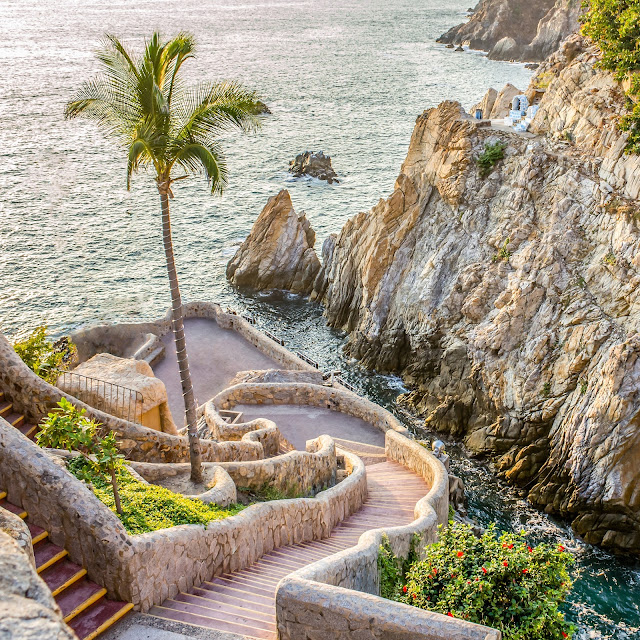Exploring Acapulco's Historic Sites and Cultural Attractions
Acapulco is often considered a place for sun, sand, and nightlife. Still, there's so much more to this iconic city than its beaches and clubs. Acapulco has a deep and fascinating history that dates back centuries, from its days as a bustling port on the Spanish trade routes to its role as a glamorous escape for celebrities in the mid-20th century. If you want to experience a different side of Acapulco, dive into its historic sites and cultural attractions that tell the story of a city shaped by adventure, trade, and rich local traditions.
One of the best places to start is the Fuerte de San Diego, a star-shaped fortress that sits proudly on a hill overlooking Acapulco Bay. Built-in the early 1600s to protect the city from pirates who preyed on the valuable Manila galleons, this fort is a reminder of Acapulco's strategic importance during the colonial era. Walking through its thick stone walls and bastions, you can almost imagine the cannons firing at enemy ships in the bay. Today, the fort houses the Acapulco Historical Museum, where you can explore fascinating exhibits about the city's history—from its days as a significant trading port connecting Asia and the Americas to the battles fought here during Mexico's War of Independence. The museum's collection includes ancient maps, maritime artifacts, colonial weapons, and indigenous art. The fort also offers stunning views over the bay, making it a perfect spot to reflect on the city's past and capture some great photos.
After visiting the fort, head to El Zócalo, Acapulco's main square, to taste the city's local culture and everyday life. Unlike the modern tourist zones, El Zócalo is where you'll find the heart and soul of Acapulco. The square is shaded by large trees and filled with local vendors selling everything from fresh fruit and tacos to handmade crafts. It's a vibrant gathering spot to see local families, musicians, and street performers. Overlooking the square is the Catedral de Nuestra Señora de la Soledad, a beautiful church uniquely blending Moorish and Byzantine architecture. Its blue and white domes are instantly recognizable, giving it a charm that stands out against the modern city backdrop. The atmosphere is peaceful—a perfect place to take a quiet moment and soak in the local spirit.
Not far from El Zócalo, the Casa de la Máscara (House of Masks) offers a unique cultural experience. This small museum is dedicated to the tradition of masks, deeply rooted in Mexican culture, especially in indigenous communities. The museum showcases an incredible collection of masks used in various dances, festivals, and rituals across Mexico. Each mask has its own story, reflecting the country's diverse cultural heritage and beliefs. Some are colorful and whimsical, while others are more somber and ancient. Visiting Casa de la Máscara is like journeying through Mexico's cultural history and understanding the deep symbolism behind these fascinating art forms.
Parque Papagayo is another excellent spot to explore for a mix of history, culture, and a bit of fun. This large urban park is not just a green escape but also a cultural hub that reflects the spirit of Acapulco. Here, you'll find a replica of an old Spanish galleon ship that kids love to climb on, as well as various monuments and sculptures celebrating Mexican heroes and history. The park often hosts local festivals, cultural events, and performances, providing a lively atmosphere where visitors can experience local traditions firsthand. Whether strolling through the gardens, enjoying a paddleboat ride, or catching a local dance performance, Parque Papagayo offers a little of everything for families and culture lovers.
To immerse yourself further in the local environment, the Acapulco Botanical Garden (Jardín Botánico de Acapulco) is a peaceful retreat that combines nature and art. Located on the hills overlooking the bay, this garden is home to various native plants, tropical flowers, and cacti. Walking along its paths, you can learn about the region's unique flora and cultural significance, including their uses in traditional medicine and local cuisine. Several sculptures by Mexican artists are scattered throughout the garden, blending natural beauty with artistic expression. It's a serene spot to enjoy a quiet afternoon, take a leisurely walk, or appreciate the natural side of Acapulco.
To truly get a feel for the local culture, a visit to the Mercado de Artesanías El Parazal is a must. This bustling market is where local artisans sell handmade jewelry, pottery, textiles, and other crafts that make for authentic souvenirs. It's a vibrant place filled with color, sounds, and the smells of local foods. The market is a great place to engage with local vendors, learn about their crafts, and taste Acapulco's daily life. The experience is a sensory overload in the best possible way, offering a raw and authentic glimpse into the city's culture.
No cultural exploration of Acapulco would be complete without seeing the famous La Quebrada Cliff Divers. This is not just a show; it's a tradition that has been part of Acapulco's culture since the 1930s. These fearless divers jump from towering cliffs as high as 115 feet into a narrow inlet below, timing their leaps perfectly with the waves to ensure a safe landing. The evening shows, where the divers perform with flaming torches, add more drama and excitement. Watching the cliff divers is a breathtaking experience that combines natural beauty with human skill and courage—a symbol of the daring spirit that defines Acapulco.












Comments
Post a Comment